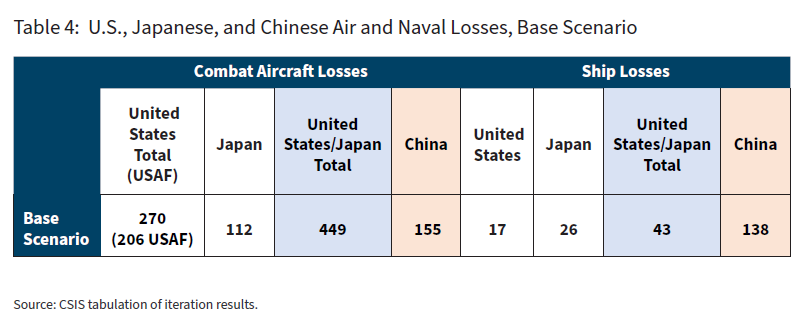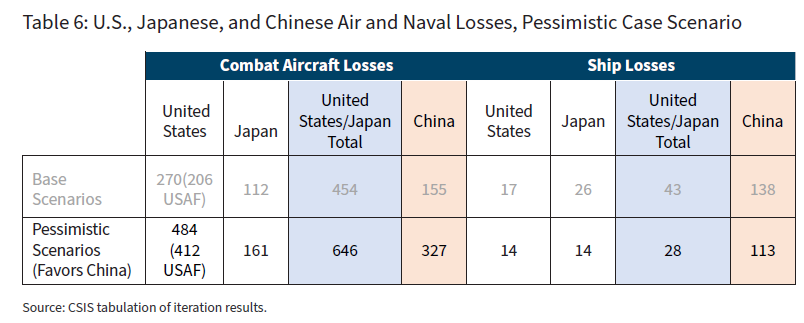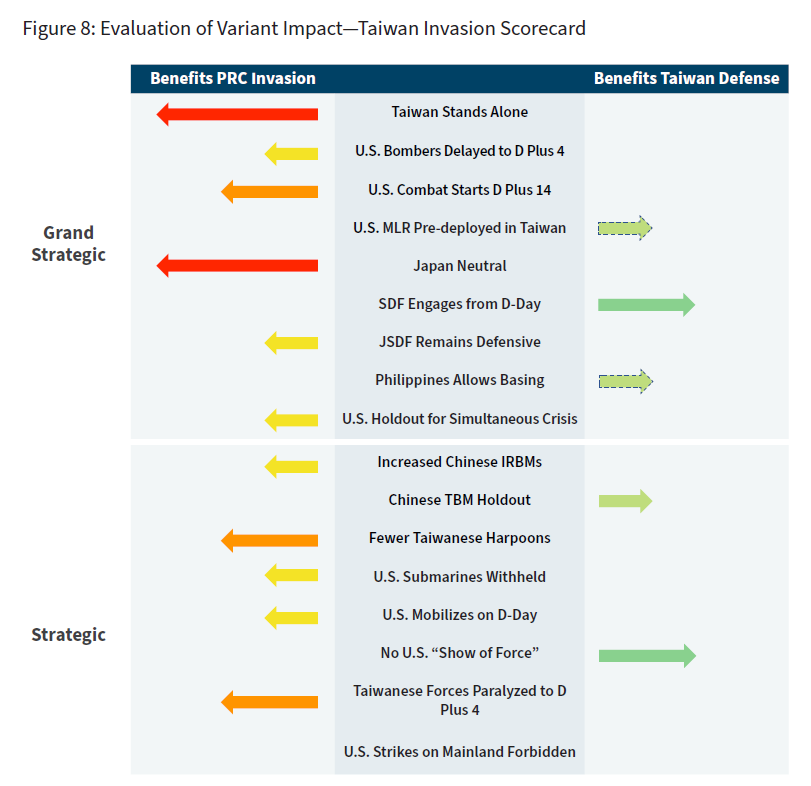相馬千春
岸田政権は防衛政策を大転換させて、敵基地攻撃能力の獲得を始めとした軍備拡張に乗り出しました。こういう情勢になると、市民にとっても軍事問題を考えることは避けて通れない。しかし軍事問題についての議論となると、日本では、信条的な立場からの発言が多いようで、対話は成立し難いようにも思われます。
それで<もう少し事実にもとづいた議論ができないものか>と思っていたところ、新年になってアメリカのCSIS(戦略国際問題研究所)が「中国の台湾侵攻の図上演習(ウォー・ゲーム)」の結果を公表しました。その要旨を読み始めたところ、あまりに面白いので――自分の語学力のなさも忘れて――試訳にチェレンジしてみました。この論文は、CSISが台湾での戦争――それが始まれば、日本も巻き込まれるであろう戦争――の様相をその高度の情報力・解析力で分析したものですから、日本の「防衛問題」――精確に言えば軍事問題――を考えている全ての人にとって「必読文献」とも言えるものでしょう。そこで拙訳ではありますが、容易に拙訳の誤りを指摘して戴けるように、対訳で公開することと致します。(訳文中、[ ]で括っているところは、訳者による補足または説明です。)
https://www.csis.org/analysis/first-battle-next-war-wargaming-chinese-invasion-taiwan
JANUARY 2023 2023年1月
The First Battle of the Next War 次の戦争の最初の戦い
Wargaming a Chinese Invasion of Taiwan 中国の台湾侵攻を図上演習する
AUTHORS 著者
Mark F. Cancian
Matthew Cancian
Eric Heginbotham
Executive Summary 概要
What would happen if China attempted an amphibious invasion of Taiwan? もし中国が台湾への揚陸侵攻を企図したならば、何が起こるだろうか?CSIS developed a wargame for a Chinese amphibious invasion of Taiwan and ran it 24 times. CSISは中国による台湾への揚陸侵攻を想定した図上演習[ウォー・ゲーム]を開発して、それを24回実行した。In most scenarios, the United States/Taiwan/Japan defeated a conventional amphibious invasion by China and maintained an autonomous Taiwan. ほとんどのシナリオで、米国/台湾/日本は中国の通常兵器による揚陸侵攻を打ち負かして台湾の自治権を維持する。However, this defense came at high cost. しかしこの防衛は高いコストを要する。The United States and its allies lost dozens of ships, hundreds of aircraft, and tens of thousands of servicemembers. 合衆国とその同盟国は数ダースの艦船、数百の航空機、そして数万の兵員を失い(訳注1)、Taiwan saw its economy devastated.台湾はその経済が荒廃するのを見る。Further, the high losses damaged the U.S. global position for many years. さらにまた、この高い損失は合衆国の世界的な地位を長年にわたって傷つける。China also lost heavily, and failure to occupy Taiwan might destabilize Chinese Communist Party rule. 中国も重い損害を受け、台湾占領の失敗は中国共産党の支配を不安定化させるかもしれない。Victory is therefore not enough. したがって勝利すれば十分であるのではない。The United States needs to strengthen deterrence immediately. 合衆国は抑止力を早急に強める必要がある。
訳注1 米軍と自衛隊の損失については、この論文は次のように見積もっている。
ベースシナリオの場合
オプテミスティックシナリオの場合
なお、p.87では「日本の航空機の損失もまた三分の二のイテレーション[プログラミングで終了条件に達するまで一定の処理を繰り返すこと]で高く、平均すると122機であり、また同様に大部分は地上で打撃を受ける」(Japanese air losses were also high in two out of three iterations, averaging 122 aircraft, and were also largely incurred on the ground.)とされており、またp.88では「海上自衛隊もより重大な損害を被る」(The JMSDF suffered even more heavily)が、その理由は「海自の軍事的な資産がすべて中国の対艦ミサイルシステムのレンジ内に置かれているから」(as all its assets fall within the range of Chinese anti-ship missile systems)とされている。要するに、このような大損害は、空戦や海戦で生じるのではない。高価な航空機や艦船の多くが地上や軍港などで破壊されるのである。(訳注1終了)
The Challenge 課題(訳注2)
China’s leaders have become increasingly strident about unifying Taiwan with the People’s Republic of China (PRC).1 中国の指導者は台湾の中華人民共和国(原注1)への統一に関してますます声高になってきている。Senior U.S. officials and civilian experts alike have expressed concern about Chinese intentions and the possibility of conflict. 合衆国政府高官と文民の専門家は等しく中国の意図と戦いの可能性に関して懸念を表明している。Although Chinese plans are unclear, a military invasion is not out of the question and would constitute China’s most dangerous solution to its “Taiwan problem”; 中国の計画は不明確ではあるが、軍事侵攻は、問題外というわけではなく、「台湾問題」に関する中国の最も危険な解決策の構成要素となるかもしれない。it has therefore justly become a focus of U.S. national security discourse. それゆえに[台湾への]軍事侵攻は正しく合衆国の国家安全保障論議の焦点となっている。
1 The project uses “China” to refer to the People’s Republic of China, recognizing that many on Taiwan consider themselves Chinese also. (原注1)このプロジェクトは「中国」を中華人民共和国を指すために使うが、台湾の多数の人々が自分たちを中国人と見做していることを認識している。
訳注2 NHKの「ニュースで学ぶ「現代英語」」によると、「challengeは日本語の「チャレンジ」よりも「困難で深刻な課題」」とのこと。https://www2.nhk.or.jp/gogaku/gendaieigo/detail/index.html?no=20221117(訳注2終了)
Because “a Taiwan contingency is the pacing scenario” for the U.S. military, it is critical to have a shared, rigorous, and transparent understanding of the operational dynamics of such an invasion.2なぜなら合衆国軍にとっては合衆国軍にとって「台湾での偶発事件はペーシング(訳注3)・シナリオである」のだから、そのような侵攻の作戦の力学について共有され、精密で、かつ明らかな理解を持つことが決定的に重要である。Just as such an understanding was developed concerning the Cold War’s Fulda Gap, so too must analysts consider the Taiwan invasion scenario. そのような理解が冷戦におけるフルダ・ギャップに関して開発されたものであったのと同様に、分析者は台湾侵攻のシナリオについて懸念しなければならない。This understanding is important because U.S. policy would be radically different if the defense were hopeless than if successful defense were achievable. この理解は重要であって、なぜならば合衆国の政策は次のことによって、根源的に異なるのだからである、すなわち防衛が絶望的であるか、あるいは成功し得る防衛に到達可能であるかによって。If Taiwan can defend itself from China without U.S. assistance, もし台湾が中国から合衆国の支援なしに自らを防衛できるのであれば、then there is no reason to tailor U.S. strategy to such a contingency.そのような偶発事件についての合衆国の戦略をあつらえる理由はない。At the other extreme,その対極の場合、 if no amount of U.S. assistance can save Taiwan from a Chinese invasion, 即ち合衆国の支援のどのような総計も台湾を中国の侵攻から救うことができないのであれば、then the United States should not mount a quixotic effort to defend the island.合衆国はその島を防衛するという非現実的な努力を準備すべきではない。However, if U.S. intervention can thwart an invasion under certain conditions and by relying on certain key capabilities, then U.S. policy should be shaped accordingly. しかしながら、もし合衆国の介在が、一定の条件の下で、また一定の重要な能力によって、侵攻を妨害できるのであれば、合衆国の政策はそれに従って形づけられるべきである。In this way, China would also be more likely to be deterred from an invasion in the first place.この方法で、中国に侵攻を出発点で思いとどまらせることも、よりあり得ることになるだろう。 However, such shaping of U.S. strategy requires policymakers to have a shared understanding of the problem.しかしながら、そのような合衆国の戦略の形成のためには、政策立案者は問題について理解を共有していなければならない。
2 Ely Ratner, testimony before the Senate Foreign Relations Committee, “The Future of U.S. Policy on Taiwan,” 117th Cong., 1st sess., 2021, (原注2)Ely Ratner、上院外交委員会での証言、「台湾についての将来の合衆国の政策」第117議会、第1セッション、2021年、https://www.foreign.senate.gov/hearings/the-future-of-us-policy-on-taiwan120821
訳注3 ペーシング=pacingの含意に関しては、http://www.nids.mod.go.jp/publication/commentary/pdf/commentary191.pdf「米国防計画における「Pacing Threat」としての中国」を参照されたい。この論文は、「pacingは米軍が紛争時において戦う相手を想定することで、米軍が目指すべき能力や戦力組成・態勢を規定する。すなわち、米国防計画の「歩調を設定(pace)」する「脅威」であることから「pacing threat」なのだといえよう」としている。(訳注3終了)
Yet, there is no rigorous, open-source analysis of the operational dynamics and outcomes of an invasion despite its critical nature. さらに、作戦の力学と侵攻の結果についての精密な・公開情報による分析は、侵攻の危機的な本性にも拘らず、存在していない。Previous unclassified analyses either focus on one aspect of an invasion, are not rigorously structured, or do not focus on military operations. 以前の機密扱いではない諸分析は、侵攻についての一つの角度に焦点を合わせてはいるが、精密に体系化されてはいないか、あるいは軍事作戦に焦点を合わせていないか、のどちらかである。Classified wargames are not transparent to the public. Without a suitable analysis, public debate will remain unanchored. 機密扱いの図上演習は公衆には明らかになってはいない。適切な分析を欠いたまま、公衆の論議は漂い続けている。
Therefore, this CSIS project designed a wargame using historical data and operations research to model a Chinese amphibious invasion of Taiwan in 2026. それゆえに、CSISは歴史的なデータと作戦研究を使って、2026年における中国の台湾への揚陸侵攻のモデルとなり得る図上演習を設計した。Some rules were designed using analogies with past military operations;いくつかのルールは 過去の軍事作戦の類推を使って設計された。for example, the Chinese amphibious lift was based on analysis of Normandy, Okinawa, and the Falklands.例えば、中国の揚陸力はノルマンディー、沖縄、そしてフォークランドの分析に基づいている。 Other rules were based on theoretical weapons performance data, such as determining the number of ballistic missiles required to cover an airport. 他のルールは、ある空港を射程内に収める弾道ミサイル数の判定などのような、諸兵器の理論上のパフォーマンス・データに基づいている。Most rules combined these two methods. ほとんどのルールはこれら二つの方式と結びつけられた。In this way, the results of combat in the wargame were determined by analytically based rules instead of by personal judgment. この方法では、図上演習における戦闘の結果は、ヒトの判定のかわりに、分析的に基礎づけられたルールによって決定されている。The same set of rules applied to the first iteration and to the last iteration, ensuring consistency.ルールの同じ集合が最初のイテレーション[プログラミングで終了条件に達するまで一定の処理を繰り返すこと]から最後のイテレーションまで、整合性を確保しながら、用いられた。
Based on interviews and a literature review, the project posited a “base scenario” that incorporated the most likely values for key assumptions. インタビューと文献調査に基づいて、このプロジェクトは「ベース・シナリオ」を仮定したが、これは主要な仮説にとっての最もありそうな値を組み入れたものである。The project team ran that base scenario three times. プロジェクト・チームはそのベース・シナリオを三度実行した。A variety of excursion cases then explored the effects of varying assumptions.3またさまざまな逸脱事例は変化する諸仮定の諸効果を探求した。The impact of these varying assumptions on the likely outcome is depicted in a Taiwan Invasion Scorecard (see Figure 8).ありそうな結果におけるこれらの変化する諸仮定の効果は台湾侵攻のスコアカード(図8(訳注4)を見よ)に描かれている。In all, 24 iterations of the game mapped the contours of the conflict and produced a coherent and rigorously derived picture of a major threat facing the United States. 総体で、演習の24のイテレーションが戦いの輪郭を図解し、合衆国が直面している主要な脅威についての、首尾一貫した・精密で・根拠の明らかな絵図面を作り出した。
3 Excursion cases include assumptions that are plausible although not considered the most likely.(原注3)逸脱事例は、もっともらしいが、可能性が高いとは見做されない仮定を含んでいる。
訳注4 図8は次のものである。
(訳注4終了)
The Results 結果
The invasion always starts the same way: [図上演習における]侵攻はいつも同じ方法で始められるが、an opening bombardment destroys most of Taiwan’s navy and air force in the first hours of hostilities.交戦の最初の数時間のうちに、台湾の海軍と空軍のほとんどは開戦を告げる爆撃によって破壊される。Augmented by a powerful rocket force, the Chinese navy encircles Taiwan and interdicts any attempts to get ships and aircraft to the besieged island. 強力なロケット軍によって増強されて、中国海軍は台湾を取り囲み、攻囲された島に艦船と航空機を接近させようとするどのような企てをも絶つ。Tens of thousands of Chinese soldiers cross the strait in a mix of military amphibious craft and civilian roll-on, roll-off ships, while air assault and airborne troops land behind the beachheads. 空からの襲撃部隊[ヘリコプターによる部隊]および空挺部隊[固定翼機による部隊]が上陸拠点の背後に着地するのと並行して、数万の中国兵が軍用の揚陸艇と民間のRORO船[貨物を積んだトラックやシャーシ(荷台)ごと輸送する船舶]で海峡を渡る。
However, in the most likely “base scenario,” the Chinese invasion quickly founders. しかし、最もありそうな「ベース・シナリオ」においては、中国の侵攻は早期に失敗する。Despite massive Chinese bombardment, Taiwanese ground forces stream to the beachhead, where the invaders struggle to build up supplies and move inland.大規模な中国軍の爆撃にも拘わらず、台湾陸軍は 上陸拠点になだれ込み、そこで侵攻軍は補給を確保して内陸に前進しようと、もがくことになる。Meanwhile U.S. submarines, bombers, and fighter/attack aircraft, often reinforced by Japan Self-Defense Forces, rapidly cripple the Chinese amphibious fleet.そうしている間に合衆国の潜水艦、爆撃機、そして戦闘攻撃機が、しばしば日本の自衛隊によって補強されて、速やかに中国の揚陸艦隊を無力化する。 China’s strikes on Japanese bases and U.S. surface ships cannot change the result: 中国による日本の基地と合衆国の水上艦艇に対する攻撃は結果を変えることは出来ない。Taiwan remains autonomous.台湾は自治権を持った状態に留まる。
There is one major assumption here: Taiwan must resist and not capitulate.ここには大きな仮定があって、それは台湾は抵抗し、降伏しないに違いない、というものである。If Taiwan surrenders before U.S. forces can be brought to bear, the rest is futile. もしも台湾が、合衆国軍が支援のために到着し得る以前に、降伏するならば、[シナリオの]残りの部分は役に立たない。
This defense comes at a high cost. この防衛のコストは高くつく。The United States and Japan lose dozens of ships, hundreds of aircraft, and thousands of servicemembers. 合衆国と日本は数ダースの艦船と数百の航空機、数千の兵員を失う。Such losses would damage the U.S. global position for many years. そのような損失は数年に渡って合衆国の世界的な地位を傷つけるだろう。While Taiwan’s military is unbroken, it is severely degraded and left to defend a damaged economy on an island without electricity and basic services. 台湾軍が破壊されないとしても、台湾はひどく地位を下げてしまい、結果として電気と基礎的なサービスを欠いた島においてダメージを受けた経済を防衛するだけの話になってしまう。China also suffers heavily. 中国もまたひどい損害を被る。Its navy is in shambles, the core of its amphibious forces is broken, and tens of thousands of soldiers are prisoners of war. その海軍は粉みじんになって、揚陸軍の中核は破壊され、数万の兵士が捕虜となる。
Conditions for Success 成功の条件
Analysis of the 24 game iterations showed four necessary conditions to defeat a Chinese invasion. 24回の演習のイテレーションは中国を打ち負かすための四つの必要条件を示す。
1. Taiwanese forces must hold the line. 台湾軍は戦線を保持しなければならない。
Recommendation: Strengthen Taiwanese ground forces. 提言:台湾地上軍を強化すること。Because some Chinese forces will always land on the island,いくらかの中国軍は[どのイテレーションでも]いつも島に上陸するので、Taiwanese ground forces must be able to contain any beachhead and then counterattack forcefully as Chinese logistics weaken.台湾地上軍はどの上陸拠点をも封じ込めることができなければならず、それから、中国の兵站が弱まるにつれて、強力な反撃に転じなければならない。 However, the Taiwanese ground forces have severe weaknesses. しかしながら、台湾地上軍はひどい弱点を持っている。Therefore, Taiwan must fill its ranks and conduct rigorous, combined arms training. それゆえ、台湾はその兵卒と指揮統率に諸兵科合同の厳しい訓練を課さねばならない。Ground forces must become the center of Taiwan’s defense effort. 地上軍が台湾の防衛努力の中心とならねばならない。
2. There is no “Ukraine model” for Taiwan. 台湾用の「ウクライナ」モデルは存在しない。
Recommendation: In peacetime, the United States and Taiwan must work together to provide Taiwan with the weapons it needs; in wartime, if the United States decides to defend Taiwan, U.S. forces must quickly engage in direct combat. 提言:平時において、合衆国と台湾は、台湾に必要な兵器を供給するために共働しなければならない。戦時において、合衆国が台湾防衛を決断した場合は、合衆国軍は素早く直接的な戦闘に従事しなければならない。In the Ukraine war, the United States and the North Atlantic Treaty Organization (NATO) have not sent troops directly into combat but have sent massive amounts of equipment and supplies to Ukraine. ウクライナ戦争では、合衆国と北大西洋条約機構(NATO)は部隊を直接的な戦闘には送らないでいるが、大量の装備と補給物資をウクライナに送っている。Russia has been unable to interdict this overland flow. ロシアはこの陸上の流れを断つことができていない。However, the “Ukraine model” cannot be replicated in Taiwan because China can isolate the island for weeks or even months. しかし台湾で「ウクライナ・モデル」を再現することはできない、何故なら中国は台湾を数週間あるいはそれどころか数カ月にわたって孤立させることができるのだから。Taiwan must start the war with everything it needs. 台湾は戦争を始める際には、台湾は必要なもの全てを携えていなければならない。Further, delays and half measures by the United States would make the defense harder, increase U.S. casualties, allow China to create a stronger lodgment, and raise the risk of escalation. さらに、合衆国[軍]の遅延や中途半端な処置は防衛をより困難にし、合衆国[軍]の死傷者を増やし、中国[軍]により強固な拠点を生み出すことを許し、エスカレーションのリスクを高めるであろう。
3. The United States must be able to use its bases in Japan for combat operations. 合衆国は戦闘作戦に日本におけるその基地を使用できなければならない。
Recommendation: Deepen diplomatic and military ties with Japan. 提言:日本との外交上・軍事上の結びつきを深めよ。While other allies (e.g., Australia and South Korea) are important in the broader competition with China and may play some role in the defense of Taiwan, Japan is the linchpin. 他の同盟国(例えば、オーストラリアと韓国)は中国とのより広い意味での競争においては重要であり、また台湾の防衛において、いくらかの役割を果たすかもしれないとは言え、日本はリンチピン[要]である。Without the use of U.S. bases in Japan, U.S. fighter/attack aircraft cannot effectively participate in the war.日本における合衆国の基地の使用なくして、合衆国の戦闘・攻撃機は効果的に戦争に参加することは出来ない。
4. The United States must be able to strike the Chinese fleet rapidly and en masse from outside the Chinese defensive zone.合衆国は中国艦隊を素早くまたひとまとめにして、また中国の防衛ゾーンの外側から攻撃できなければならない。
Recommendation: Increase the arsenal of long-range anti-ship cruise missiles. 提言:長距離対艦巡行ミサイルの兵器工場を増やせ。Bombers capable of launching standoff, anti-ship ordnance offer the fastest way to defeat the invasion with the least amount of U.S. losses. スタンドオフの[相手の射程圏外から使用できる]対艦兵器を発射できる爆撃機は、合衆国が最小の損害で侵攻を打ち負かす最速の方法を提供する。Procuring such missiles and upgrading existing missiles with this anti-ship capability needs to be the top procurement priority.そのようなミサイルを調達することと現存する対艦用ミサイルをアップグレードすることが調達において最優先でなければならない。
Avoiding a Pyrrhic Victory ピュロスの勝利(訳注5)を避けること
Victory is not everything. 勝利が全てではない。The United States might win a pyrrhic victory, suffering more in the long run than the “defeated” Chinese. 合衆国は、ピュロスを勝利を得て「負かされた」中国より長いあいだ損害を被るかもしれない。Furthermore, the perception of high costs might undermine deterrence: そのうえ、[勝利の]コストは高いという認識は抑止力をひそかに傷つけるかも知れない。if China believes that the United States would be unwilling to bear the high costs of defending Taiwan, then China might risk an invasion. もし中国が、合衆国は台湾防衛の高いコストを支えるのは不本意だと信じるならば、中国はリスクを取って侵攻するかもしれない。The United States should therefore institute policies and programs to make winning less costly in the event of conflict. それゆえに合衆国は、戦いが起こった場合に、より少ないコストで勝利を得るための政策と計画を制定すべきである。Such measures would include: そのような対処法は次のことを含むだろう。
訳注5
https://ejje.weblio.jp/content/Pyrrhic+Victory によると、「ピュロスの勝利」とは、古代ギリシャの王ピュロスPyrrhusが多大な犠牲を払ってローマに勝ったことから、「(犠牲が多くて)引き合わない勝利」を意味する。
POLITICS AND STRATEGY 政策と戦略
・Clarify war plan assumptions. 戦争計画で仮定されている事柄を明確にせよ。There is a seeming gap between war plans, which assume prewar deployments to Taiwan and neutral countries, and political realities.台湾ならびに戦争に参加しない諸国への戦争前からの部隊展開を仮定する戦争計画と政治的な現実の間には外見上のギャップがある。
・Do not plan on striking the mainland. (中国)本土への攻撃を計画してはならない。The National Command Authority might withhold permission because of the grave risks of escalation with a nuclear power. 国家指揮権限[法的に正当な最高位の軍事命令を出す権限]は、核戦力をともなうエスカレーションという重大なリスクのゆえに、[本土攻撃への]許可を与えないでおくかもしれない。
・Recognize the need to continue operations in the face of heavy casualties. 多数の死傷に直面しても作戦を続ける必要があることを認識せよ。In three weeks, the United States will suffer about half as many casualties as it did in 20 years of war in Iraq and Afghanistan. 3週間のうちに、合衆国が被るであろう[人的な]損害は、20年に及ぶイラクとアフガニスタンでの戦争での死傷者のおよそ半数である。
・Move Taiwanese air and naval forces toward asymmetry. 台湾の空・海軍力を非対称性へと動かせ。Despite rhetoric about adopting a “porcupine strategy,” Taiwan still spends most of its defense budget on expensive ships and aircraft that China will quickly destroy. 「ヤマアラシ戦略」(訳注6)の採用というレトリックにも拘らず、台湾はいまだ防衛予算の大半を高価な艦船と航空機に費やしているが、中国はそれらを素早く破壊するだろう。
訳注6 岡崎研究所「中国がたとえ怒っても、米国は台湾を防衛強化すべき」https://wedge.ismedia.jp/articles/-/13751 によると、「ヤマアラシ戦略」は「台湾に高度な空軍、海軍の戦力を保持させるかわりに、小規模な歩兵や武器を配備することによって、中国の武力進攻から台湾を守るという軍事戦略」である。
DOCTRINE AND POSTURE ドクトリンと態勢
・Fortify and expand air bases in Japan and Guam. 日本とグアムの航空基地を要塞化し、拡張せよ。Dispersion and hardening dilute the effects of missile attacks. 分散と強固化はミサイル攻撃の効果を弱める。
・Revise U.S. Air Force doctrine and restructure procurement to increase aircraft survivability on the ground. 合衆国空軍のドクトリンを改定し調達を作り直して、地上における航空機のサバイバビリティを増進させよ。Ninety percent of aircraft losses occurred on the ground. 航空機喪失の90%は地上において生じる。
・Do not plan on overflying the Chinese mainland. 中国本土上空の飛行を計画するな。Chinese air defense is too strong, the targets take a long time to produce operational results, and the air missions around Taiwan take priority. 中国の防空は極めて強く、ターゲットに対して作戦上の成果を出すには、長い時間がかかる。台湾周辺への出撃任務が優先される。
・Recognize the limitations of Marine Littoral Regiments and Army Multi-Domain Task Forces and cap their numbers. 海兵沿岸連隊、陸軍のマルチ・ドメイン・タスク・フォース[領域横断任務部隊]の限界を認識し、それらの数の上限を定めよ。These units are designed to counter China and do provide some value, but political and operational difficulties put limits on their utility. これらのユニットは中国に対抗して、いくらかの価値あるものを提供するためにデザインされているが、政治上のまた作戦上の困難性がそれらの有効性に制限を課している。
・Avoid crisis deployments that create vulnerabilities. 脆弱性を生み出す危機対処展開を避けよ。Military doctrine calls for forward deployments to enhance deterrence during a crisis, but these forces make tempting targets. 軍事ドクトリンは、抑止力を高めるために、危機のあいだ前方への展開を要求するが、これらの軍は[敵にとっては]魅惑的なターゲットになる。
WEAPONS AND PLATFORMS 兵器とプラットフォーム
・Shift to smaller, more survivable ships and develop rescue mechanisms to deal with crippled ships and multiple sinkings. より小さな、より残存性の高い艦艇へとシフトするとともに、損傷艦艇と多様な沈没に対応するための救難機構を開発せよ。Surface ships are extremely vulnerable, with the United States typically losing two carriers and 10 to 20 large surface combatants in game iterations. 水上艦艇は極端に脆弱であり、合衆国の場合、演習の諸々のイテレーションにおける典型的な損失は2隻の空母と10から20隻の大型水上戦闘艦である。
・Continue development and fielding of hypersonic weapons but recognize that they are niche weapons. 極超音速兵器に関わる開発と守備を継続せよ。しかしそれらがニッチな兵器であることを認識しなければならない。Their high cost limits inventories, so they lack the volume needed to counter the immense numbers of Chinese air and naval platforms. それらのコストは高く、その在庫数は限られる。したがってそれらは莫大な数の中国の海空のプラットフォーム[兵器を積載する艦船や航空機など]に対抗するために必要な数量を欠く。
・Prioritize sustainment of the bomber fleet over fighters. 戦闘機より爆撃隊の持続可能性を優先させよ。The range, missile standoff distance, and high carrying capacity of bombers presented the People’s Liberation Army with daunting challenges. 爆撃機の航続距離・それが持つミサイルのスタンドオフ距離・その高い積載能力は[図上演習において]人民解放軍にたいして威圧的な課題を与えた。
・Produce more, cheaper fighters and balance the acquisition of stealth aircraft with production of non-stealth aircraft. より安い戦闘機をもっと生産せよ、そしてステルス航空機の獲得と非ステルス航空機の生産とをバランスさせよ。With so many aircraft lost early in the conflict, the Air Force risks running out of fighter/attack aircraft and becoming a secondary player in the conflict unless it has a large enough force to sustain the losses. 空軍が損失を被っても十分な大きい戦力を持っているのでない限り、戦いにおけるあまりに多数の航空機の早期の喪失で、空軍は戦闘・攻撃機を使い果たし、戦いにおける二次的なプレイヤーになるリスクを冒すことになる。
Finally, the project and its recommendations need some caveats. 最後に、このプロジェクトとその提言はいくつかの注意を必要とする。Modeling an invasion does not imply that it is inevitable or even probable. 侵攻のモデリングは、それが避けられないということを、あるいは、ありそうだということさえも、含意してはいない。The Chinese leadership might adopt a strategy of diplomatic isolation, gray zone pressure, or economic coercion against Taiwan; 中国の指導者たちは台湾に対して、外交的に孤立させること・グレイ・ゾーンの圧力・あるいは経済的な威圧という戦略を採用するかもしれない。even if China opts for military force, this might take the form of a blockade rather than an outright invasion. 仮に中国が軍事力を選択するとしても、この軍事力は公然たる侵攻という形態よりも封鎖の形態を取るかもしれない。However, the risk of invasion is real enough and potentially so destructive that analysis is worthwhile. しかしながら、侵攻のリスクは十分に現実的であり、潜在的にはとても破壊的であるから、分析は価値がある。
The project does not take a position on whether the benefits of defending Taiwan outweigh the prospective costs, or how to weigh those costs and benefits. このプロジェクトは、台湾防衛のベネフィットが予期されるコストより重いか否かについて、あるいはコストとベネフィットを如何に量るかについて、あるひとつの立場を取るものではない。Instead, the purpose is to enhance the public debate and thus allow the nation to make better-informed decisions on this critical national security challenge.その代わり、その目的は公衆の討論の質を高め、従って国民が、この決定的に重要な国の安全保障の課題について、よりよく情報を得た上で決定することを可能にすることである。
(そうまちはる:公共空間X同人)
(訳者の申し出により、次の修正を行いました。
① “While Taiwan’s military is unbroken, it is severely degraded and left to defend a damaged economy on an island without electricity and basic services.” の訳文を、「台湾軍が破壊されないとしても、台湾はひどく地位を下げて置き去りにされ、電気と基礎的なサービスを欠いた島においてダメージを受けた経済を防衛することになる」から「台湾軍が破壊されないとしても、台湾はひどく地位を下げてしまい、結果として電気と基礎的なサービスを欠いた島においてダメージを受けた経済を防衛するだけの話になってしまう」に修正しました。
② 訳注5と訳注6を追加しました。――編集部、2023.01.23)
(pubspace-x9447,2023.01.16)




